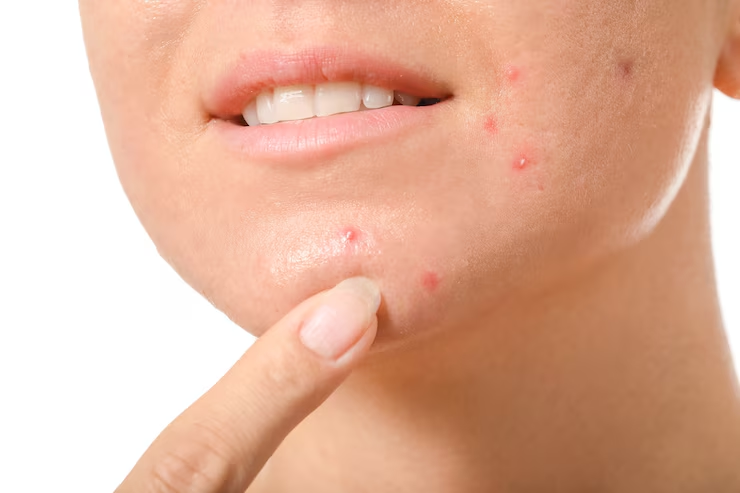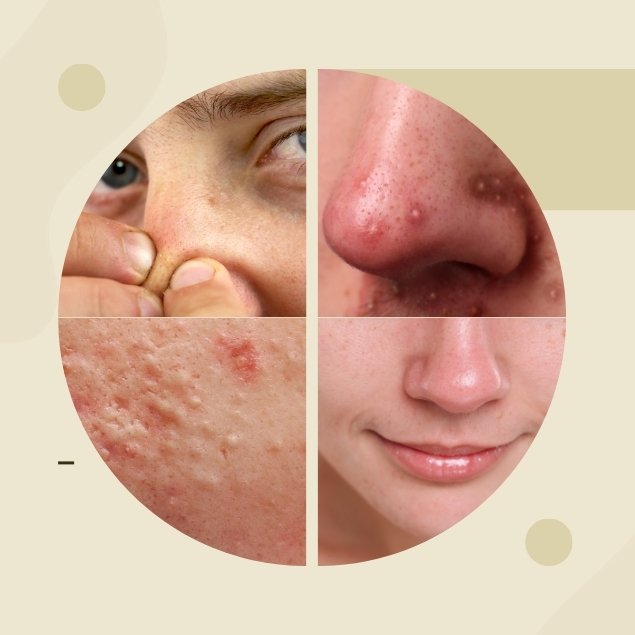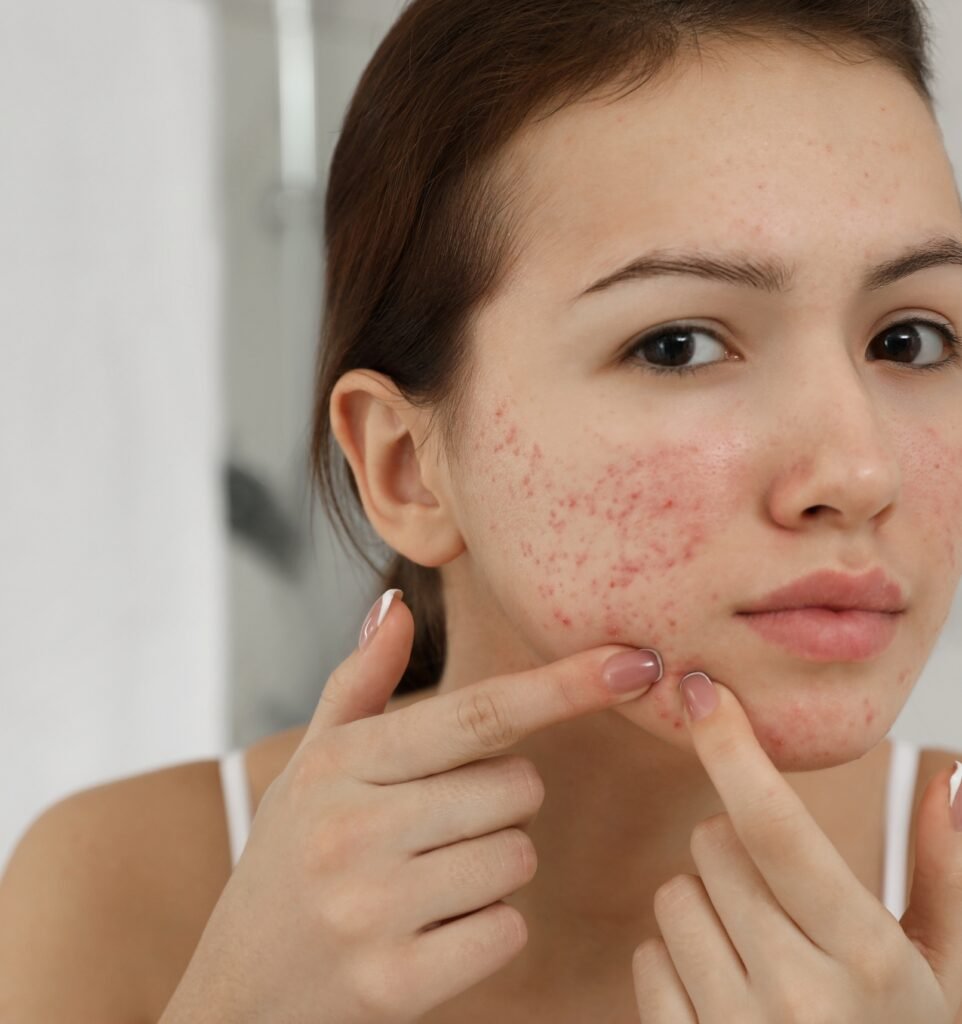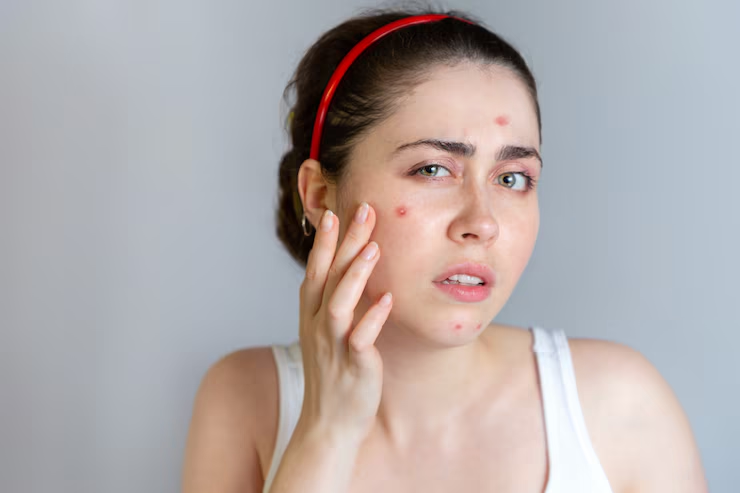SKIN DISORDER - ACNE
"CLEAR SKIN, CONFIDENT YOU!"
Acne is one of the most commonly seen skin conditions that occur due to blockage of hair follicles caused by oil (sebum) and dead skin cells. Acne vulgaris is a condition that usually affects the face, chest, back, and shoulders, and although the prevalence of acne is high in adolescence, it is present across all ages.

TYPES OF ACNE


Blackheads
There are open pores that have oil and dead skin cells, making a blockage and thus forming blackheads.

whiteheads
Formed due to clogged pores that are filled with oil and skin debris.

pustules
Red bumps, which have pus in the center and sometimes can look white or yellow.

PAPULES
These are small red and inflamed swellings on the skin.
CAUSES OF ACNE

Excess Sebum Production
Bacteria
Clogged Pores
Hormonal Changes
TREATMENT FOR ACNE

- Benzoyl Peroxide: Target bacteria, reduce inflammation, and treat clogged pores.
- Salicylic Acid: Chews dead skin cells to remove them from the skin, resulting in exfoliated skin and unclogged pores.
- Retinoids (e.g., Adapalene): Non-comedogenic acne medication that promotes cellular turnover.
- Sulfur and Resorcinol: Treat mild forms of acne by reducing oil production and speeding the elimination of bacteria.
Topical Treatment:
- Retinoids (e.g., Tretinoin): Target clogged pores with non-comedogenic cream and subdued irritations. Some topical drugs are non-comedogenic for acne but are targeted to give smoother skin.
- Antibiotics (e.g., Clindamycin): Works on decreasing the bacteria to soothe irritation.
- Azelaic Acid: Aids in unclogging pores, uprooting the underlying inflammation, and evening out darkened areas of skin owing to acne scarring.
Oral Medications:
- Antibiotics: Treats moderate to severe forms of inflammatory acne.
- Hormonal Therapy: Contraceptives and spironolactone assist in maintaining hormone levels.
- Isotretinoin (Accutane): A very strong retinoid, mainly given to deal with severe cystic acne after trying out many other alternatives but to no one helping.
- Chemical Peels: Smoothens out texture by removing the top layer of your skin and helps cut out plenty of comedones.
- Microdermabrasion: It helps reduce the scar and removes clogged poors by gently exfoliating the skin.
- Laser and Light Therapy: Anit bacterial agents and oil-producing glands are targeted specifically with laser beams.
- Drainage and Extraction: A dermatologist for the removal of extensive cysts carries this out.
Conduct regular skincare grooming by cleansing the skin with a light cleanser twice a day so dirt does not settle on your skin.
To prevent scarring, keep your hands off the pimples.
Make sure your skincare, as well as makeup steps, do not consist of any cosmogenic products.
Shampoo your hair and do not use oily products on your hair.
Eat a low glycemic diet full of fruits and vegetables.
Drink enough water and sleep enough at night.

